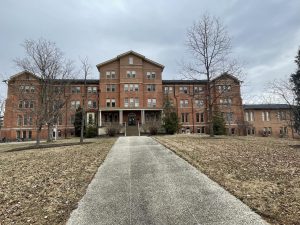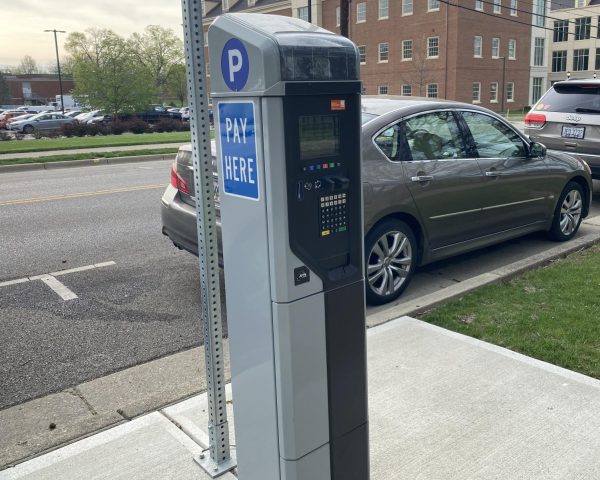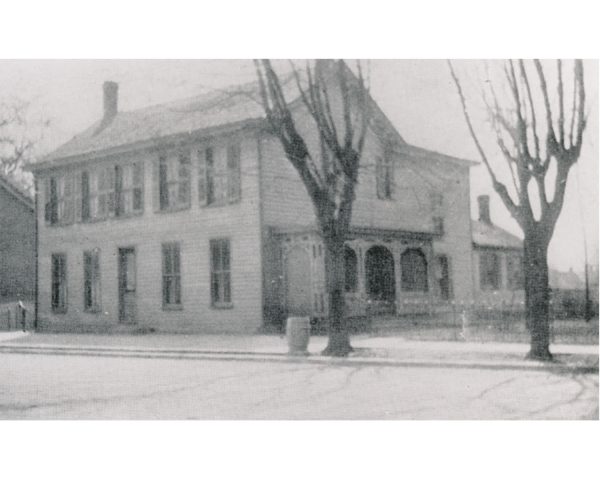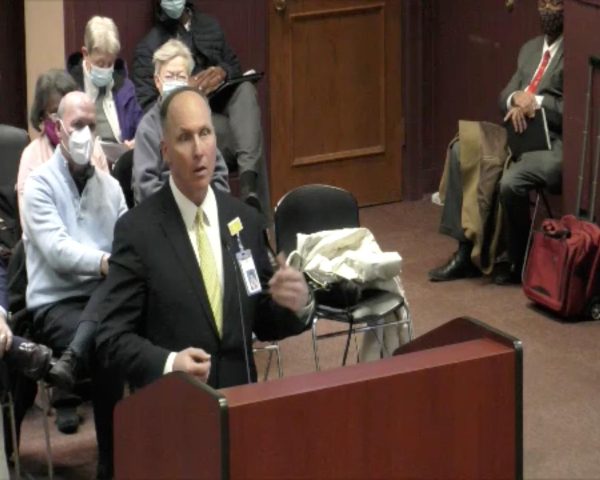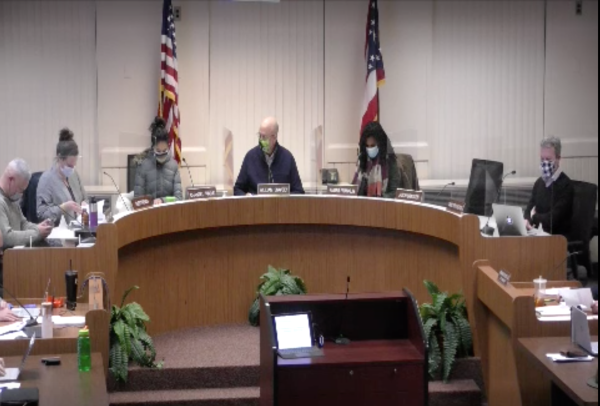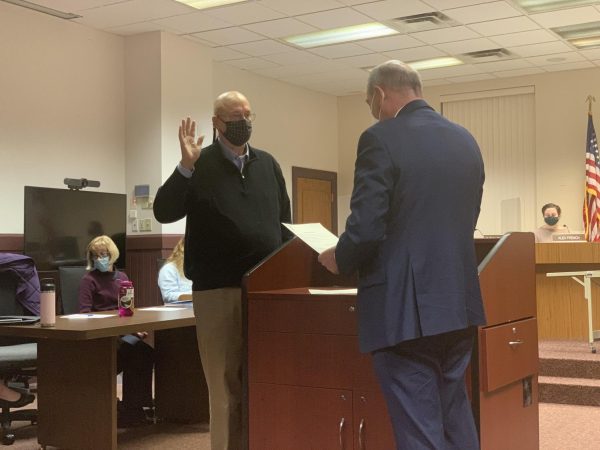City and Miami apply for grant to turn Elm Street building into Tec Hub
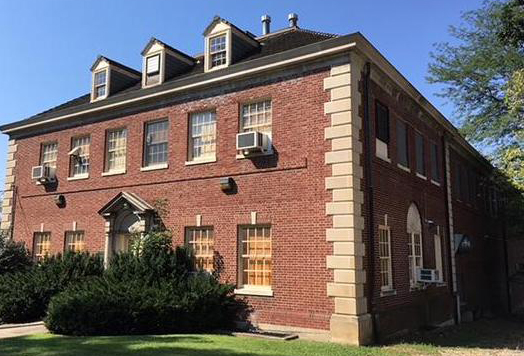
This vacant building at 20 S. Elm St. may soon be retrofitted to become a technology, entrepreneurship and creativity hub in a joint venture between Oxford and Miami University.
November 20, 2020
The City of Oxford, in partnership with Miami University, is applying for up to $2 million through the JobsOhio Vibrant Community program to help transform a vacant building at 20 S. Elm St. into a technology, entrepreneurship and creativity hub.
City council approved the measure unanimously at its Nov. 17 meeting.
“Helping to make Oxford economically viable in this dangerous time is really a very good thing, and I’m so glad that the city staff has been working so hard to make this proposal possible,” Councilor Edna Southard said. “I hope it moves forward, and I hope it’s successful.”
According to Assistant City Manager Jessica Greene, the proposed Tec Hub, which will be referred to as College@Elm, will cost $10.7 million and have two major components: an entrepreneurship training center in partnership with both Miami University and the Butler County Small Business Development Center, and an anchor tenant to provide high-quality jobs.
Randi Thomas, Miami’s director of institutional relations and the vice president of the newly formed ASPIRE Division, said the university is currently in negotiations with a light manufacturing business that could potentially act as an anchor tenant.
Miami University owns the 90-year-old building, which formerly housed the university’s food services operation. Thomas and his team will work with the city to revitalize the structure. The building has been vacant for about five years.
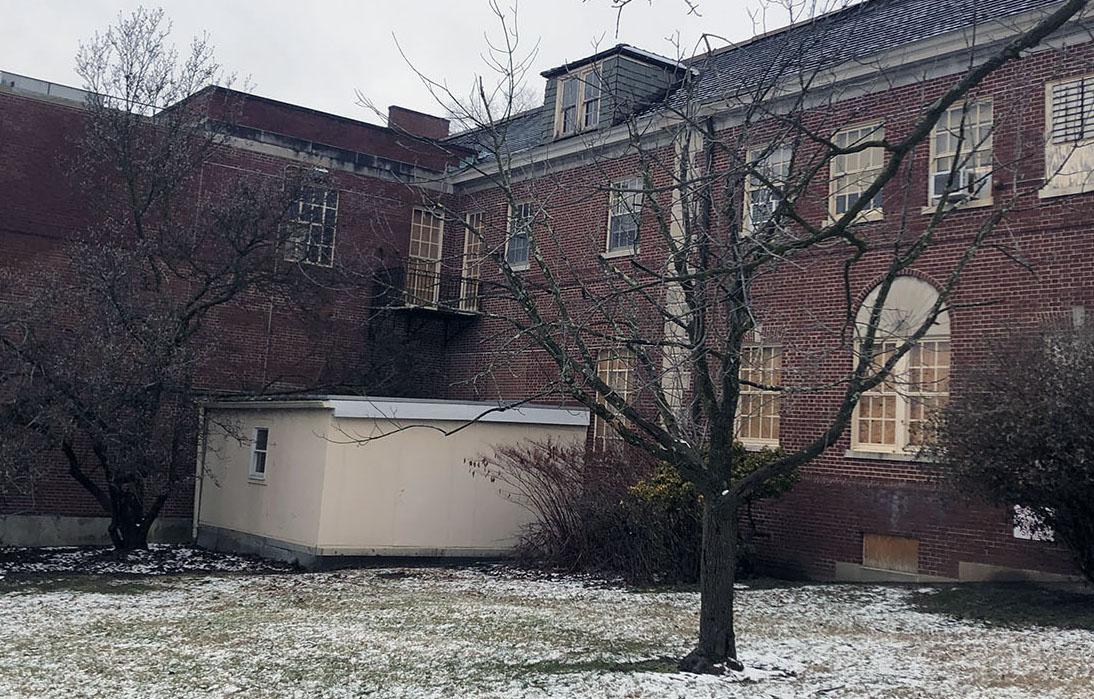
“College@Elm will be the lighthouse, the beacon, for students and community members, regardless of their educational attainment, who have an idea and would like to get assistance on how to develop that idea further and make it a viable business entity,” Thomas said.
Miami established the office for advancing strategy, partnerships, institutional relations and economy (ASPIRE) this year to streamline connections with partners in business and government and to spearhead initiatives that would make the region more economically independent.
Thomas said he hopes College@Elm, along with the Oxford Community Arts Center, Oxford Municipal Building and nearby parks will form an Oxford-Miami innovation corridor.
“In rural communities that have a vibrant and active community arts center as well as a higher education institution, entrepreneurial efforts are many times equal to that of urban areas,” Thomas said. “With the proximity of people thinking creatively from all different disciplines, we think we can unleash some pretty amazing things, and, at the heart of it, that’s what this is all about.”
Thomas said the building will hopefully have space for small businesses, start-ups, product development and the gig economy.
Both the city and university are hopeful that they will find additional funding sources to fully finance College@Elm, however, they have not yet found a matching grant, Greene said.

“We have other pending grants out there in the region, and we’re working with Miami to find more,” Greene said. The city and university are trying to show JobsOhio, the state’s economic development corporation, that they are building momentum for the project and deserving of support, she said.
“We will be turning over every stone, looking for partners, looking for grants, looking for any dollars we can get to renovate the building and get it up and running,” Thomas said. “And once (College@Elm) is running, we’ll continue that process, because a lot of folks that are going to come to us aren’t going to have the dollars to pay a lease or pay for the services.”
Cody Powell, Miami’s associate vice president of facilities and planning, said the funds would mostly be allocated to bringing the infrastructure of the building back to where it needs to be to house tenants. The interior design of the building will depend upon what businesses decide to lease space. The roof will be replaced and electrical and fire suppression updates will be made regardless of who moves in, he said.
“There would be some fit and finish, but the project would largely be addressing the building envelope and infrastructure to prepare for business to move into the space,” Powell said.
Although Miami and the city are now teaming up to rejuvenate the old building, they didn’t always agree on what should happen to the structure.
In 2018, the OPUS Development Group of Minneapolis asked the city to change the 1.5-acre area the Elm Street building resides into a high-density residential zone.
At the time, some Miami administrators supported this change, however, city council unanimously voted against it.
“(Miami) had a vision for redevelopment of the Elm Street area that we didn’t share, but I think in the long run, we have continued to work together on this district and now have a more shared vision of what growth in that area can look like beyond student housing,” Greene said.
“We’re ecstatic,” Thomas said. “The building’s renovation and getting businesses in there will just be the beginning. Because no business will come and stay forever, we will continually churn out new businesses and start-ups, and the economic impact to the area and the region should be greater than it would have been with a one-time build-out.”
According to Kristi Tanner, senior managing director of JobsOhio, the annual budget for the program is $6 million, and more than 30 entities requested funding.
“We’re really excited about having the opportunity to have this program for distressed communities around the state,” Tanner said. “We can (fund) at least three projects, but our hope is that we will be able to fund somewhere closer to maybe five.”
All approved applicants applying for the Vibrant Community program grant must submit their proposals by Nov. 30. Tanner said that all of the applicants will be notified about the status of their proposals at some point in February or March.












